
BluPrint’s Beginnings: A fateful phonecall, a trilogy of rejections and a colorful first four years
1998. I gave Sari Yap, founder of One Mega Group (then MEGA Magazine and Publications, Inc., or MMPI), a call asking whether she could spare me a copy of the MEGA magazine Centennial Issue 1992 (this all sounds so ancient because it is!). You see, our house in Argao occupied a few spreads of the MEGA home section then, and I wanted a copy. This resulted in lunch, in many stories that will remain untold here, and her comment that when MEGA embarks on doing a magazine on architecture, “I will give you a call.”
Fast forward. I did get a call one December morning that said, “Come for an interview.” And this is when I first met Jerry Tiu, MEGA Magazine’s chairman. A few days later, I was told to report in January 1999.
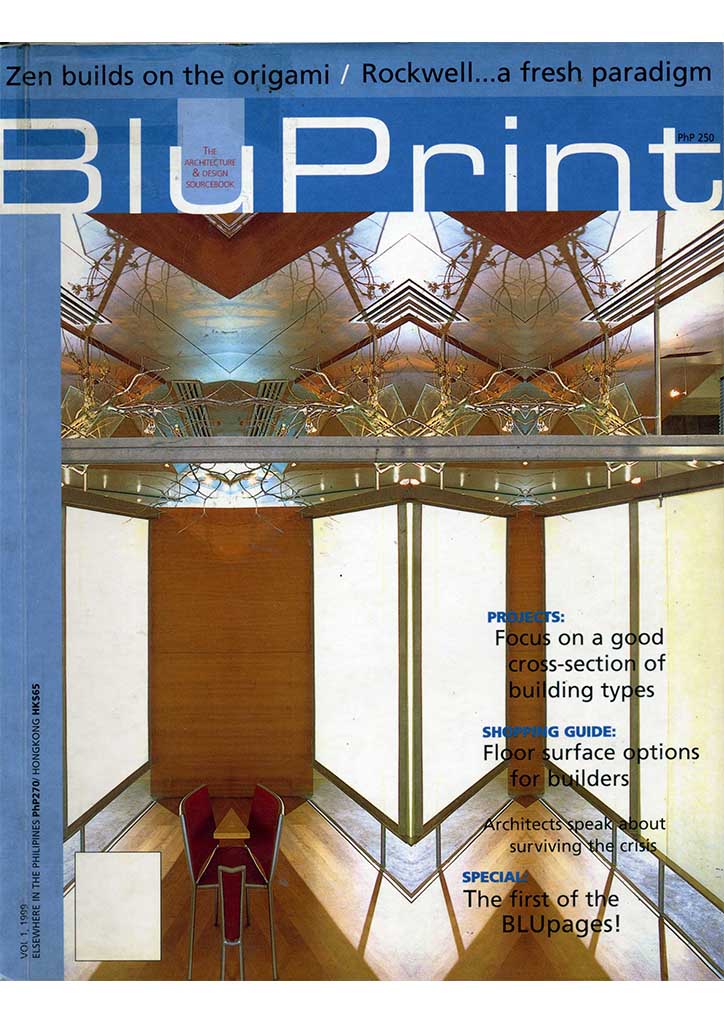
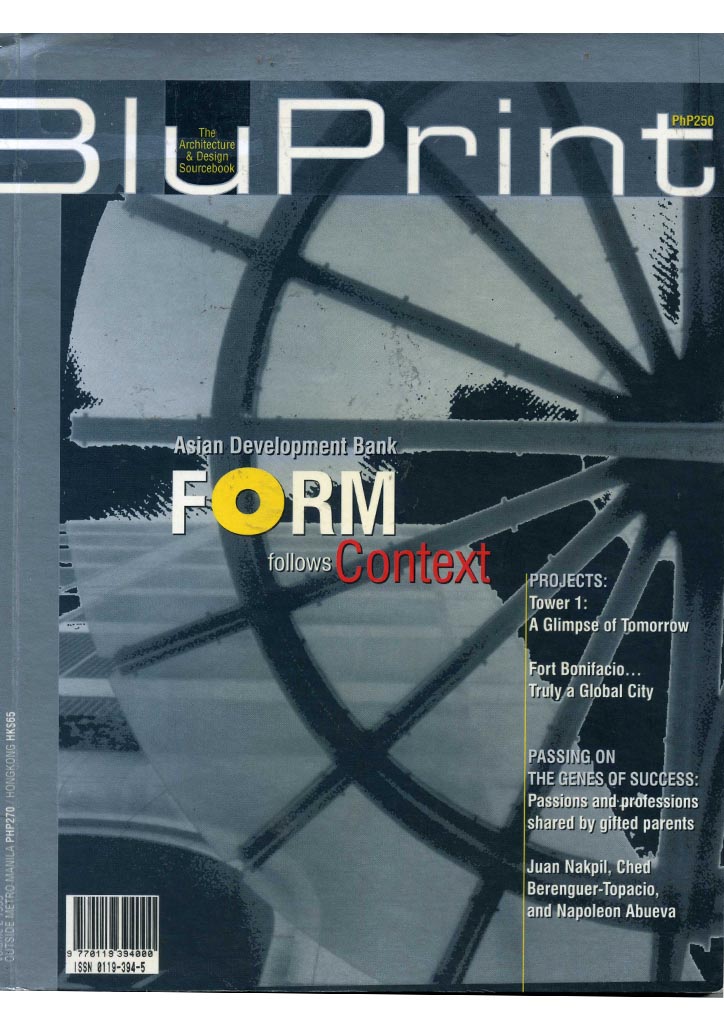
I went to work, and they told me something short of “bahala ka na” (“do as you wish”) when I inquired how one creates a new magazine. And when I did ask Sari what my job description was, she goes: You take charge of the content, its image, and keep the writing “tight.” Instructions were very loose. We briefly discussed who our target market was, and it was all up to me to create a magazine for architects and laypeople interested in design. Now that was total trust.
Where does one begin? I had one editor with me, Dina. (She wrote the most well-written article to the only interview I failed to attend due to a conflict—I believed I was needed more in the other interview.)
READ MORE: From our archives: BluPrint’s first editor’s note ever by Tina Bonoan
I had a big challenge at hand. As my first editorial note in Volume 1 of 1999 states: “My drama and passion as an architect does not include capturing moments in the best of words, but in the best of images.” In BluPrint, I aimed at doing both, so:
ONE
I formed a team. Basically, we were a maximum of three employees. Going through BluPrint’s masthead over the years, I fondly remember that we had quite a number of young writers in our in-house team. (Note, very few of design background.) I then had to look for contributing writers and photographers. Aside from finding the right writers who were appropriate for the stories or features planned, I also had to make sure I had the suitable photographers who could bring out the best images taken. And, I had to be sure the team composed of the writer, photographer, and I could work together. Our graphics department in the magazine was a dream. They allowed what I then called “voice command,” as I sat beside them to see how we could improve BluPrint’s layouts. Teamwork, in the best of words, was key.


TWO
I came up with a plan and a goal. First, the name—BluPrint. I just knew it had to be one complete package: graphic images of timeless elegance, significant content if not a forerunner in content, interesting enough for people to read, innovative, something that would make a difference.
THREE
I researched, though, relied largely on gut feel. Find out the What, Who, Where, and Whys that are out there. Never cease to ask and get the correct answers. Listen. Decide and stand by our decision.
FOUR
We worked hard as a very lean team. We (I!!!) were messengers, drivers, secretaries, stylists, and kargador, aside from the title that they gave us on the masthead. We made mistakes and learned from them and moved forward quickly. And we always found ways to improve the magazine.
READ MORE: Big, Better, Best: Dimensions of Design—a Paulo Alcazaren ed’s note
The BluPrint experience was one for the books. There was complete trust given by Sari and Jerry. And with TRUST (in all capital letters) came great responsibility of delivering a product of the highest standard. For check and balance, I was invited to board meetings to present BluPrint’s stories and plans for the upcoming issues. And they would always say, “Thank you.” And on the very few times they would give a comment, I would intently listen.
I would consult Sari when I needed guidance. Like when I needed more “substance” in some stories (she even ended up writing an article for BP!). When I needed mundane things like a car to go out of town or plane fare budget to Boracay, when I needed to pay “my” writers more than the usual (1,500 pesos per article then!). Or when others meddled in BluPrint, and I needed assurance that the decisions in the magazine were my call. And, I loved Sari even more when she told me I did not have to go to work every day since I worked too fast and I was driving everyone mad.
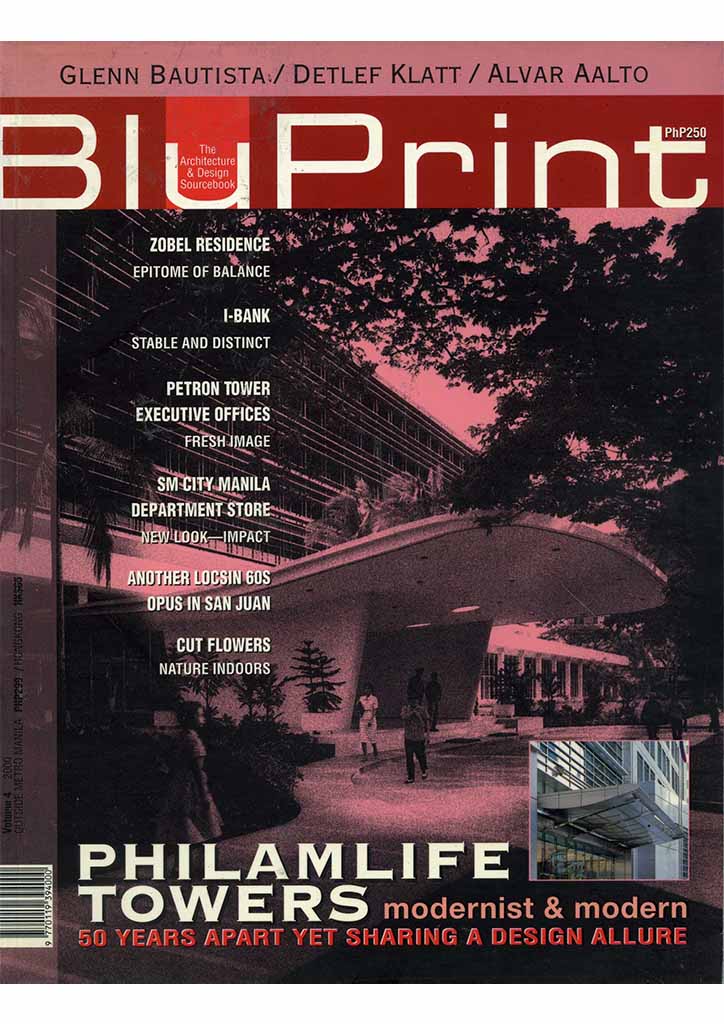
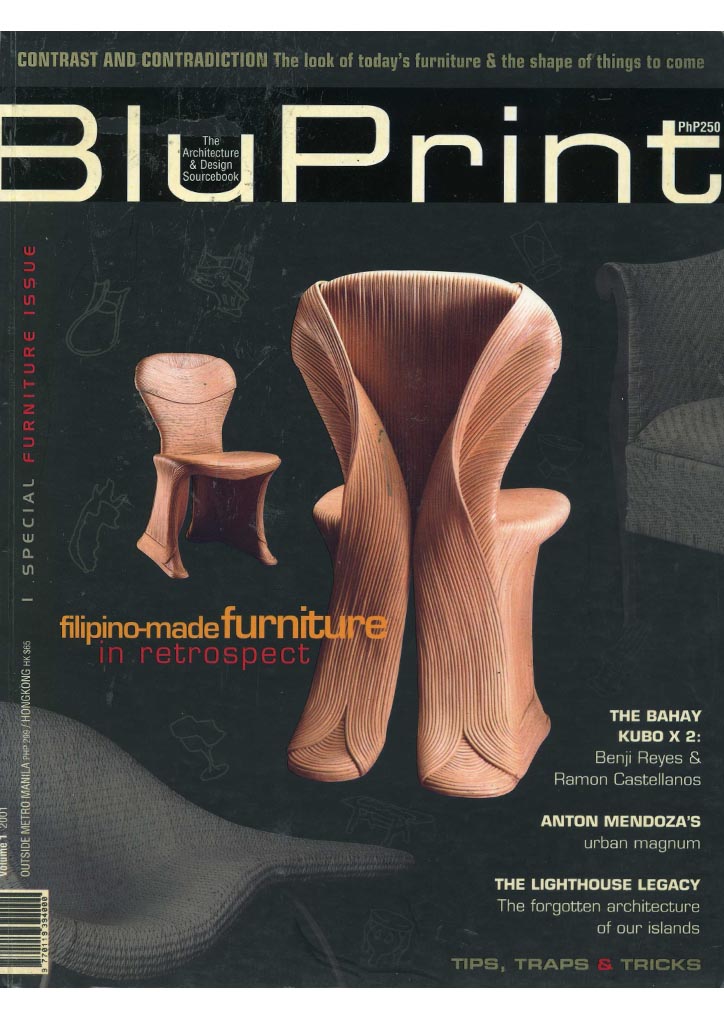
Jerry Tiu, being from the industry (he is Kent Vinyl Tiles), knew what BluPrint’s market was like. He also knew our goals in the magazine, and he was so respectful of this. He even advertised in the magazine!
BluPrint opened MEGA Magazine’s eyes to a different world. It gave us all a new perspective of the industry, perhaps to the point of playing a small role in the growth of the design and building industry. Definitely, MMPI had a strong role in the field of design and architecture journalism.
There were new faces involved that MEGA Magazine was not used to. Journalism in the field of design and architecture was soooo new that I outsourced established and new writers. Allow me to say that in my search:
– I got rejected by the elegant gentleman, writer, and forerunner architect, Toti Villalon, who said: “Tins, I work for the competition.” Design and Architecture magazine by Opat Hermano—and that call put the cat out of the bag!
– Suffered another no by cultural icon Gilda Cordero Fernando: “Am too old.”
– And the most challenging of all, UP College of Architecture Dean Geronimo Manahan’s negative comment: “Baka isang taon lang yan magazine na yan.” (“That magazine might last only a year.”)
READ MORE: An editor’s note by Dominic Galicia: “Concept, like beauty, is elusive.”
Yes, I dreamt big by calling on such stalwarts in the industry, and they made sure I landed flat on the ground. So I had to discover new writers. I tapped the academe, architects, the well-traveled, the opinionated, the experts, the walk-ins. I was very inclusive. I welcomed (but screened) everyone, including the likes of young architect Gerard Lico and the reliable, no-frills no-fuss Reuben Cañete. Then there was Patrick Flores, Edson Cabalfin, and Elena Maningat—talk about straight forward analysis. Dan Lichauco and Bronne Dytoc, whose piece caused Lord Norman Foster to write us a personal thank you for the most intelligent article written on him. (He said for the first time, he was understood).
Since I was of normal intelligence—or would like to believe so—all articles had to be something I understood, easy to read. But I must confess I did die after the first issue came out, and someone commented: “Feeling ko para akong mag-eexam pagkatapos basahin ang BluPrint!” (“I feel like I’m reviewing for exams when I read BluPrint!”) That called for a revamp!
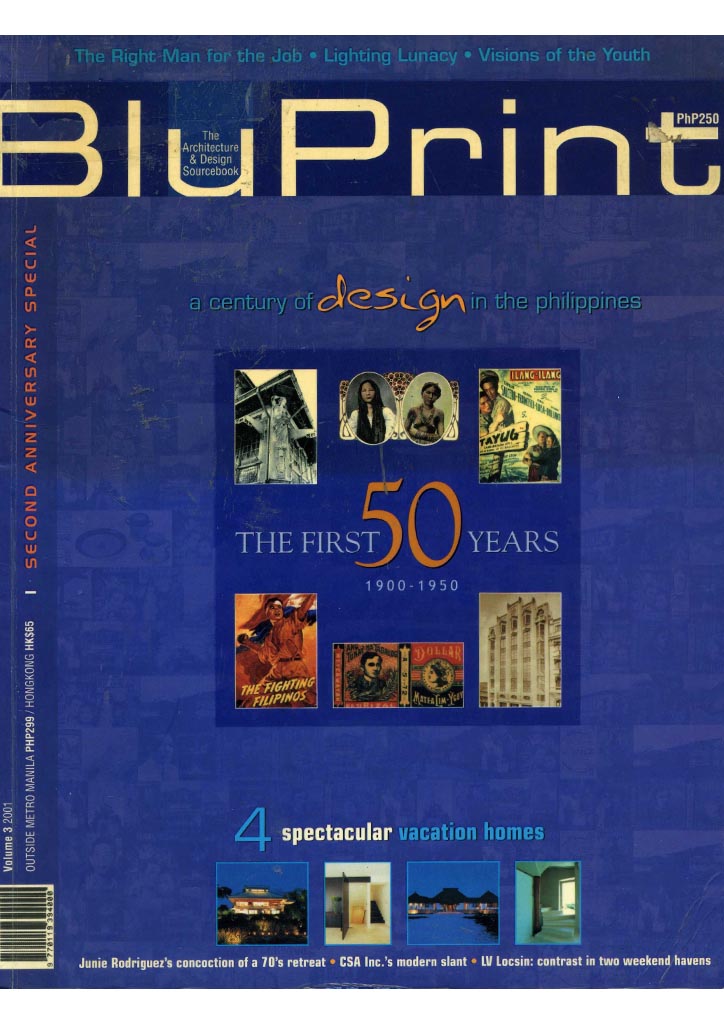

Though MEGA magazine had photographers, they did not specialize in architecture and interior photography. I looked for a new team of photographers, studied their work, and begged them to work with our fee structure and limited resources—film and Polaroids in those days were pricey. I also asked them to please tolerate my directing every shot and peeping into the camera all the time. I remember our deadline fast approaching for our first issue and I could not seem to find a single qualified photographer… until Ava Lugtu walked in with her portfolio. I believe that was a Wednesday. She was leaving for the United States the following Monday, and I never left her side until it was time for her to go.
READ MORE: The 2013 economic outlook was happy—an ed’s note by Judith Torres
I multi-tasked. I was the editor, kargador, driver, messenger, stylist, secretary, and interviewer. I mentioned earlier, I had to make sure I had the appropriate tandem of photographer-writer, and I had to be the perfect match to all those who opened their doors to us at BluPrint. I always told our team: These people we are featuring are opening their doors to accommodate us. Be grateful and respect their space and privacy. But have a PRESENCE—you represent our magazine. But, remain humble.

We went for every story that I believed to be relevant. If I had a story in mind, I would send letters seeking permission to strangers or literally knock on any door. Somehow, one does get lucky! And, we had to be first in our stories. Success rates to get good features became easier after a few issues of BluPrint had gotten published. There was relevant printed matter to back us up—more than just our “face value.”
BluPrint ran before it could even walk, and then it was time to say goodbye. Being positive it was on stable ground (and having exceeded the one-year lifespan Dean Manahan had predicted for us), I decided it was time to move on and say farewell to the publishing world. By that time, I was the editor-in-chief of My Home and editor of MEGA magazine’s Home and Entertainment section, as well.
I am grateful for those good years. I met so many people in the industry who have remained friends, whose work I understand and respect. I am thankful that journalism in our industry has grown, perhaps even matured. Though I never had direct contact with our advertisers and sponsors (I purposely made sure of this to separate editorial and advertising), I realize they’ve kept the blood flowing. Thank you. Salamat for keeping BluPrint kicking at 20!![]()


